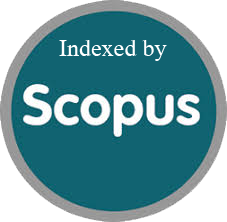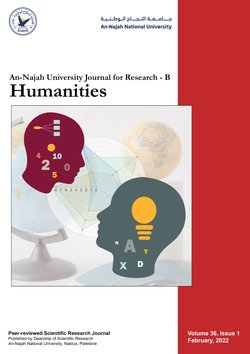The Population Educational Structure in the West Bank
Authors:
Article info
2012-04-18
2012-09-13
2012-09-13
2399 - 2426
Keywords
Abstract
This paper studies one of the most important characteristics of the population in the West Bank which is the educational status. The importance of this study comes from being one of the key indicators of the community awareness, intellectual maturity and understanding of the importance of education. Also, this paper studies the enrollment in education and the distribution of the population at various stages of learning. One of the important results of this study is: the percentage of the enrollment in education in the West Bank was up to 42.9% and the ratio between male and female was almost equal. Moreover, the illiteracy was found to decline from year to year. Its ratio declined from 11.8% -of the total adult population aged 10 years and above in 1997- to 5.8% in 2007, to 5.4% in 2009 and to 5.1% in 2010. Furthermore, the ratio of illiteracy among males was found to be lower than that among females in all districts of the West Bank. However, the ratio of the people who are able to read and write has reached 13.4% of the total population in the West aged 10 years and above. Also, the study has shown that about two-third of the population in the West Bank in the same age group are among the primary, preparatory and secondary education, whether enrolled or not enrolled in education. In addition, the ratio of the diploma holders was 4% and the ratio of undergraduate holders was 6.3%. Finally, the ratio of graduate holders (includes Higher Diploma, Masters and PhDs) was less than 1% for both sexes.
Abu Saleh, M. (2012). The Population Educational Structure in the West Bank. An-Najah University Journal for Research - B (Humanities), 26(10), 2399–2426. https://doi.org/10.35552/0247-026-010-008
[1]M. Abu Saleh, “The Population Educational Structure in the West Bank,” An-Najah University Journal for Research - B (Humanities), vol. 26, no. 10, pp. 2399–2426, Sep. 2012, doi: 10.35552/0247-026-010-008.
Abu Saleh, Maher. “The Population Educational Structure in the West Bank.” An-Najah University Journal for Research - B (Humanities), vol. 26, no. 10, Sept. 2012, pp. 2399–426. Crossref, https://doi.org/10.35552/0247-026-010-008.
1.Abu Saleh M. The Population Educational Structure in the West Bank. An-Najah University Journal for Research - B (Humanities) [Internet]. 2012 Sep;26(10):2399–426. Available from: http://dx.doi.org/10.35552/0247-026-010-008
Abu Saleh, Maher. “The Population Educational Structure in the West Bank.” An-Najah University Journal for Research - B (Humanities) 26, no. 10 (September 2012): 2399–2426. https://doi.org/10.35552/0247-026-010-008.
The Population Educational Structure in the West Bank
المؤلفون:
معلومات المقال
2012-04-18
2012-09-13
2012-09-13
2399 - 2426
الكلمات الإفتتاحية
الملخص
This paper studies one of the most important characteristics of the population in the West Bank which is the educational status. The importance of this study comes from being one of the key indicators of the community awareness, intellectual maturity and understanding of the importance of education. Also, this paper studies the enrollment in education and the distribution of the population at various stages of learning. One of the important results of this study is: the percentage of the enrollment in education in the West Bank was up to 42.9% and the ratio between male and female was almost equal. Moreover, the illiteracy was found to decline from year to year. Its ratio declined from 11.8% -of the total adult population aged 10 years and above in 1997- to 5.8% in 2007, to 5.4% in 2009 and to 5.1% in 2010. Furthermore, the ratio of illiteracy among males was found to be lower than that among females in all districts of the West Bank. However, the ratio of the people who are able to read and write has reached 13.4% of the total population in the West aged 10 years and above. Also, the study has shown that about two-third of the population in the West Bank in the same age group are among the primary, preparatory and secondary education, whether enrolled or not enrolled in education. In addition, the ratio of the diploma holders was 4% and the ratio of undergraduate holders was 6.3%. Finally, the ratio of graduate holders (includes Higher Diploma, Masters and PhDs) was less than 1% for both sexes.
Abu Saleh, M. (2012). The Population Educational Structure in the West Bank. An-Najah University Journal for Research - B (Humanities), 26(10), 2399–2426. https://doi.org/10.35552/0247-026-010-008
[1]M. Abu Saleh, “The Population Educational Structure in the West Bank,” An-Najah University Journal for Research - B (Humanities), vol. 26, no. 10, pp. 2399–2426, Sep. 2012, doi: 10.35552/0247-026-010-008.
Abu Saleh, Maher. “The Population Educational Structure in the West Bank.” An-Najah University Journal for Research - B (Humanities), vol. 26, no. 10, Sept. 2012, pp. 2399–426. Crossref, https://doi.org/10.35552/0247-026-010-008.
1.Abu Saleh M. The Population Educational Structure in the West Bank. An-Najah University Journal for Research - B (Humanities) [Internet]. 2012 Sep;26(10):2399–426. Available from: http://dx.doi.org/10.35552/0247-026-010-008
Abu Saleh, Maher. “The Population Educational Structure in the West Bank.” An-Najah University Journal for Research - B (Humanities) 26, no. 10 (September 2012): 2399–2426. https://doi.org/10.35552/0247-026-010-008.

Since 2019
Cite Score (Scopus): 0.5
Time to First Decision: 7 Days
Submission to Acceptance: 60 Days
Acceptance to Publication: 10 Days
Acceptance Rate: 20%
Call for Papers:
Special Issue on
Innovative Assessment in the Age of AI: Strategies for Quality
Why should you
Publish With Us?
An-Najah National University
Nablus, Palestine
Nablus, Palestine
- P.O. Box
- 7, 707
- Fax
- (970)(9)2345982
- Tel.
- (970)(9)2345560
- (970)(9)2345113/5/6/7-Ext. 2628
- [email protected]
- EIC
- Prof. Waleed Sweileh
